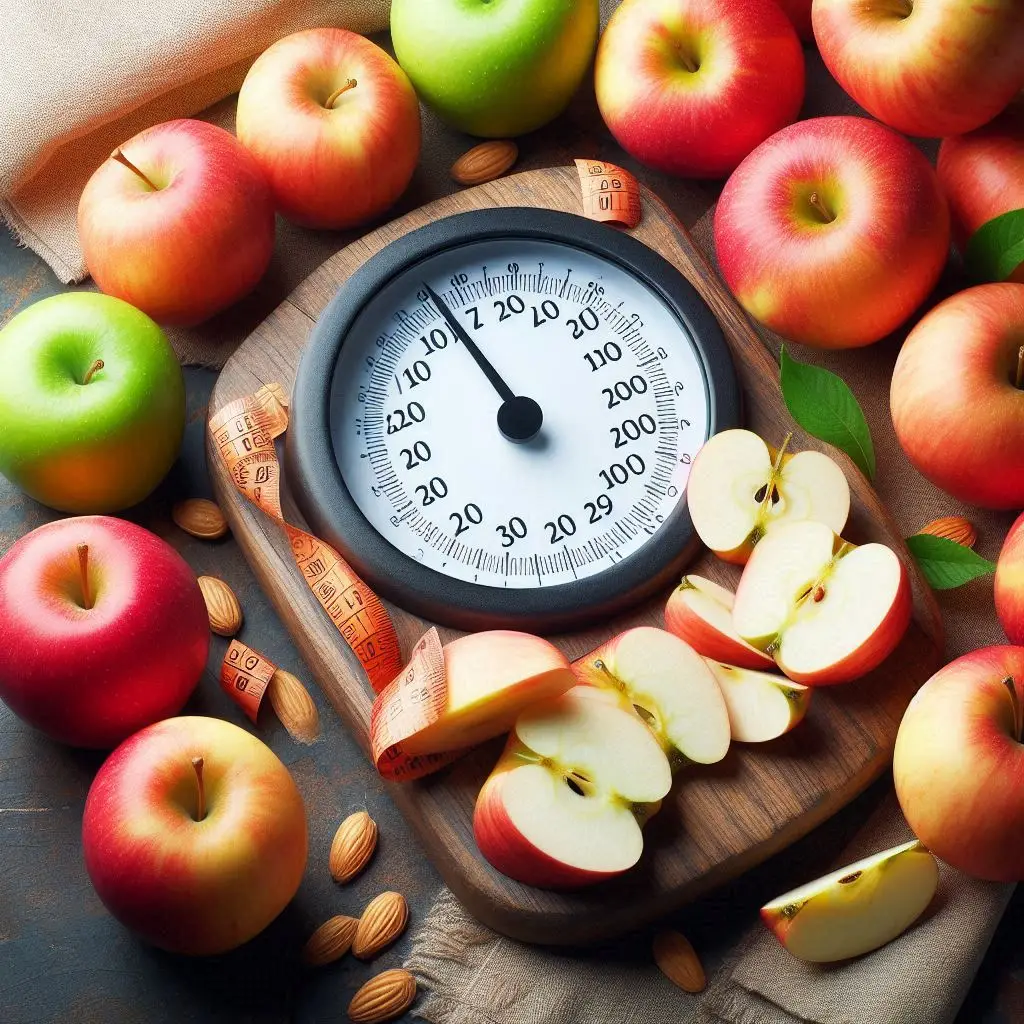
How many calories are in an apple
Introduction
This article, on how many calories are in an apple, delves into the calorie count of apples, the factors influencing it, and the broader nutritional benefits they offer.
Apples are among the most well-known and extensively eaten pieces of fruit all across the world. Their sweet and tangy flavor, combined with a satisfying crunch, makes them a favorite snack for people of all ages. However, beyond their delightful taste, apples are lauded for their numerous health benefits. One common question that arises among health-conscious individuals is: how many calories are in an apple? Understanding the caloric content and nutritional value of apples can help individuals make informed dietary choices.
The Caloric Content of Apples
The caloric content of an apple can vary based on several factors, including its size, variety, and preparation method. A medium-sized apple, weighing around 182 grams, has about 95 calories on average. Here's a more thorough explanation:
Small Apple (about 149 grams): A small apple generally contains around 77 calories.
1. Medium Apple (about 182 grams): As mentioned, a medium apple has about 95 calories.
2. Large Apple (about 223 grams): A large apple can contain up to 116 calories.
These values provide a general idea, but the exact calorie count can fluctuate slightly based on the specific variety of apple.
Factors Influencing Caloric Content
Several factors can influence the caloric content of an apple:
1. Variety: There are thousands of apple varieties, each with its unique taste and nutritional profile. For instance, a tart Granny Smith apple might have a different calorie count compared to a sweet Honeycrisp apple.
2. Ripeness: The stage of ripeness can affect the sugar content of the apple. Riper apples tend to be sweeter and might have slightly more calories due to higher sugar content.
3. Preparation Method: While a raw apple is low in calories, cooking or processing it can alter its calorie content. For example, a baked apple with added sugar and butter will have significantly more calories than a raw apple.
Nutritional Benefits Beyond Calories
While understanding the caloric content of an apple is important, it’s equally vital to consider its broader nutritional profile. Apples are rich in essential nutrients, making them a valuable addition to a balanced diet. Here are some key nutritional benefits:
1. Dietary Fiber: A medium apple contains about 4 grams of dietary fiber, which is essential for digestive health. Fiber helps in regulating bowel movements, reducing cholesterol levels, and controlling blood sugar levels.
2. Vitamins: Apples are an excellent source of vitamins, especially vitamin C, an immune-system-supporting antioxidant. Additionally, they contain trace levels of many B vitamins, vitamin K, and vitamin A.
3. Minerals: Apples provide a range of essential minerals, including potassium, which helps maintain healthy blood pressure, and small amounts of calcium, magnesium, and iron.
4. Antioxidants: Antioxidants including quercetin, catechin, and chlorogenic acid are abundant in apples. These substances may lower the chance of developing chronic illnesses including cancer and heart disease by reducing oxidative stress.
5. Apples and Weight Management
Given their low caloric content and high nutritional value, apples can be an excellent addition to a weight management plan. Here’s how apples can aid in weight control:
1. Low-Calorie Density: Apples have a low calorie density, meaning they provide fewer calories than their volume suggests. This can help individuals feel full and satisfied without consuming too many calories.
2. Satiety: The high fiber content in apples can promote a feeling of fullness, reducing overall calorie intake. Eating an apple before a meal can lead to a reduction in the amount of food consumed during the meal.
3. Healthy Snacking: Apples make for a convenient and healthy snack option. Replacing high-calorie, low-nutrient snacks with apples can help reduce overall calorie intake while providing essential nutrients.
Choosing the Right Apple
When selecting apples, it’s important to consider their purpose. Different varieties offer different textures and flavors, which can be suited for various uses. For instance:
1. For Snacking: Sweet and crisp varieties like Honeycrisp, Fuji, and Gala are great for eating raw.
2. For Baking: Tart and firm varieties like Granny Smith and Braeburn hold up well during cooking and are ideal for pies and other baked goods.
3. For Sauces: Softer varieties like McIntosh and Golden Delicious are excellent for making applesauce.
Incorporating Apples into Your Diet
There are numerous ways to incorporate apples into your daily diet:
1. Raw: Simply wash and eat. Apples can be enjoyed on their own or paired with nut butter for added protein and healthy fats.
2. Salads: Add sliced apples to salads for a sweet and crunchy addition.
3. Baked: Bake apples with a sprinkle of cinnamon for a healthy dessert.
4. Smoothies: Blend apples with other fruits and vegetables for a nutritious smoothie.
5. Cooking: Use apples in savory dishes, such as pork with apple compote, to add a hint of sweetness.
Conclusion
In conclusion, apples are not only delicious but also nutritionally valuable, making them an excellent choice for a healthy diet. With an average of around 95 calories per medium apple, they are a low-calorie snack that offers a host of benefits, including dietary fiber, vitamins, minerals, and antioxidants. By incorporating apples into your daily routine, you can enjoy their delightful taste while reaping the numerous health benefits they provide. Whether you enjoy them raw, baked, or blended into a smoothie, apples are a versatile and nutritious addition to any diet. So next time you reach for a snack, consider grabbing an apple and enjoy the wholesome goodness it offers.

